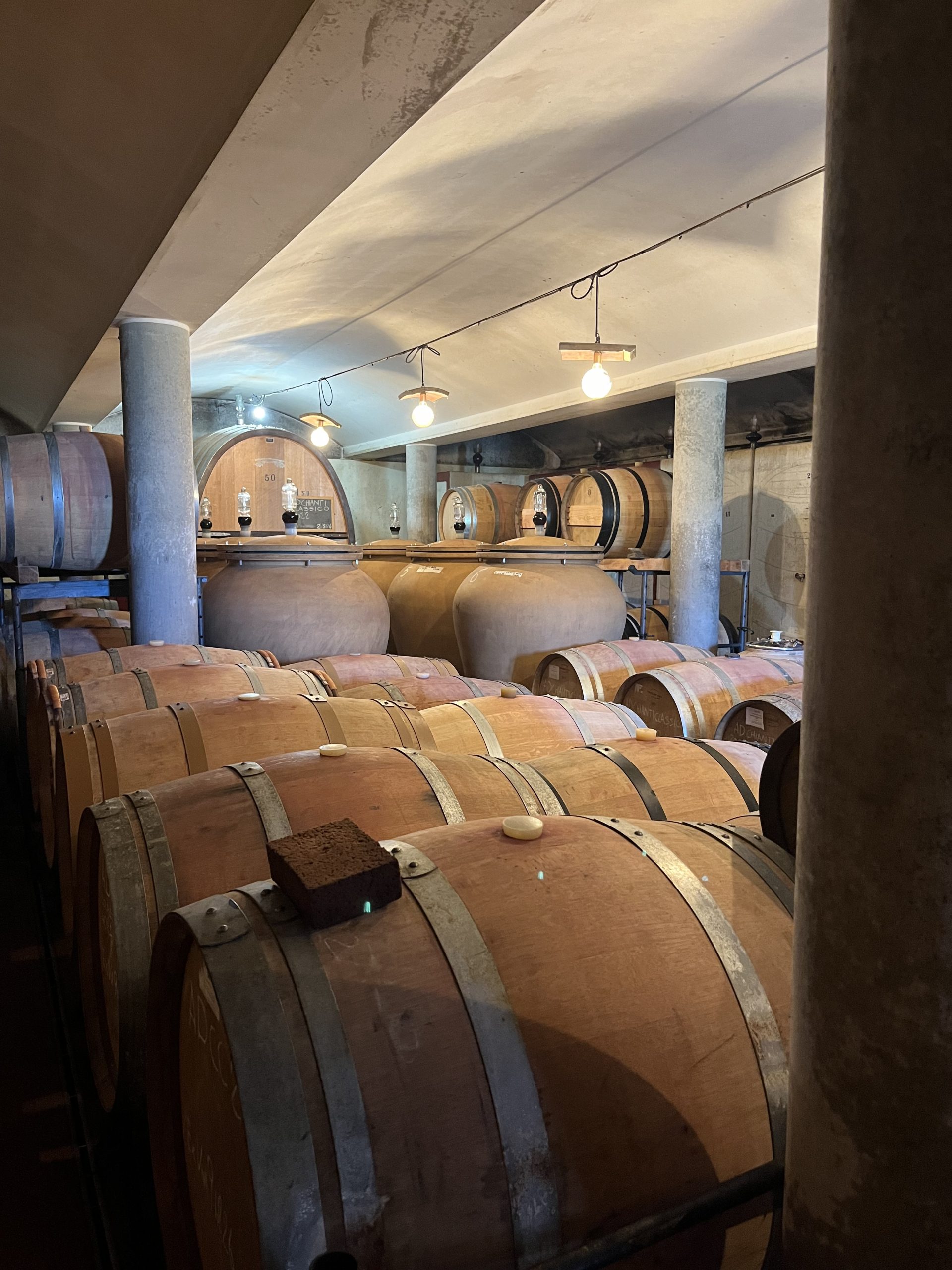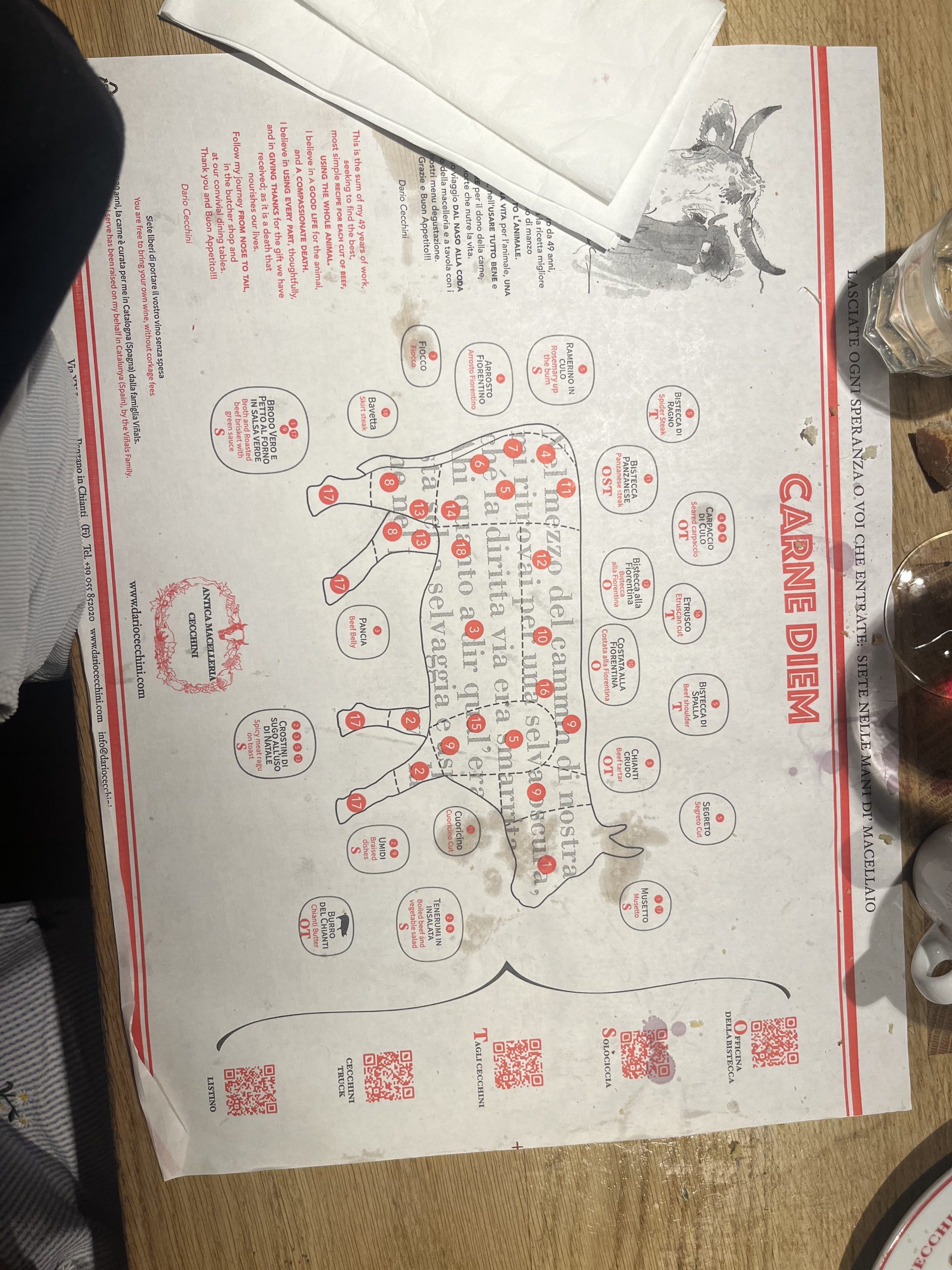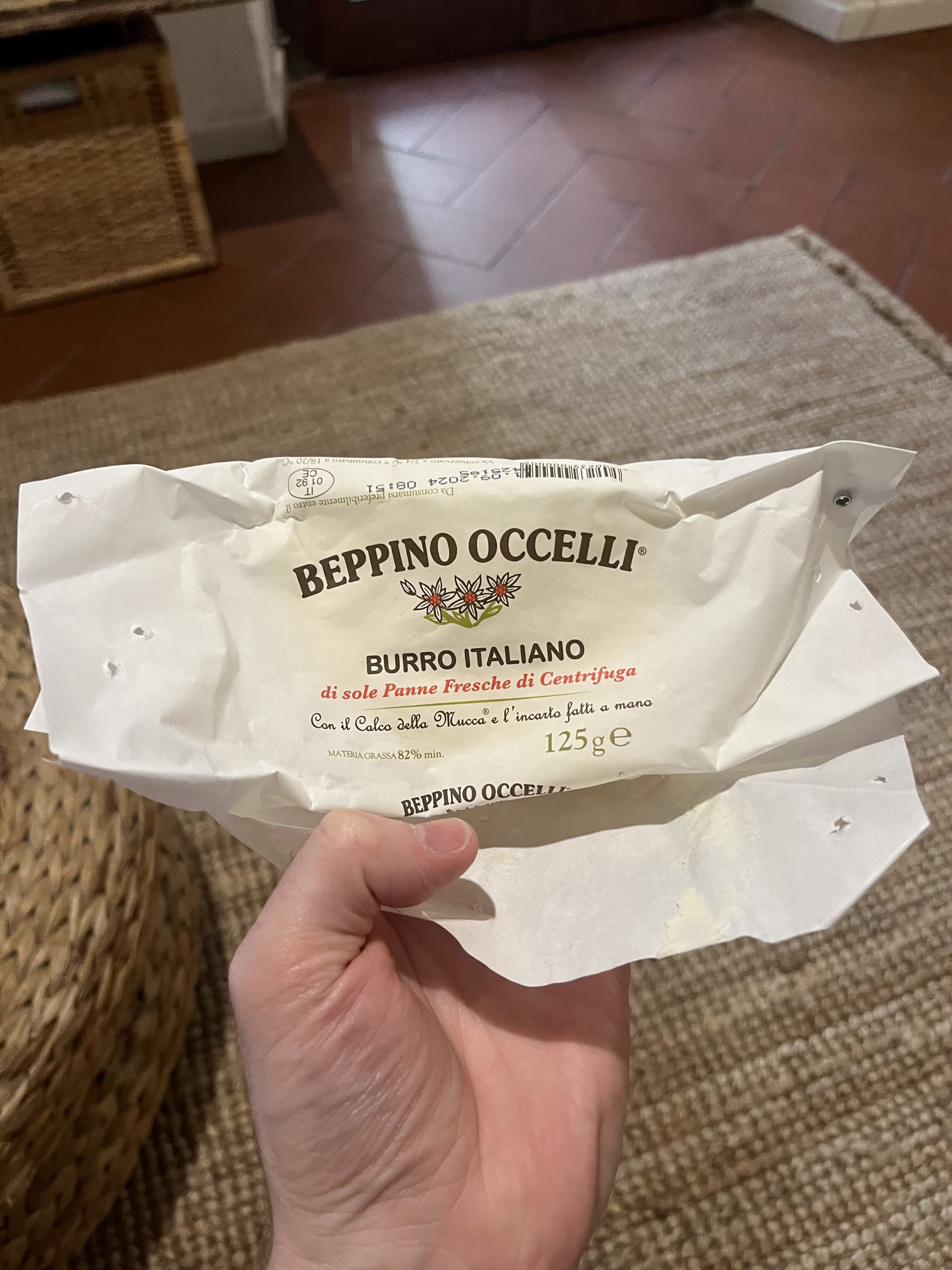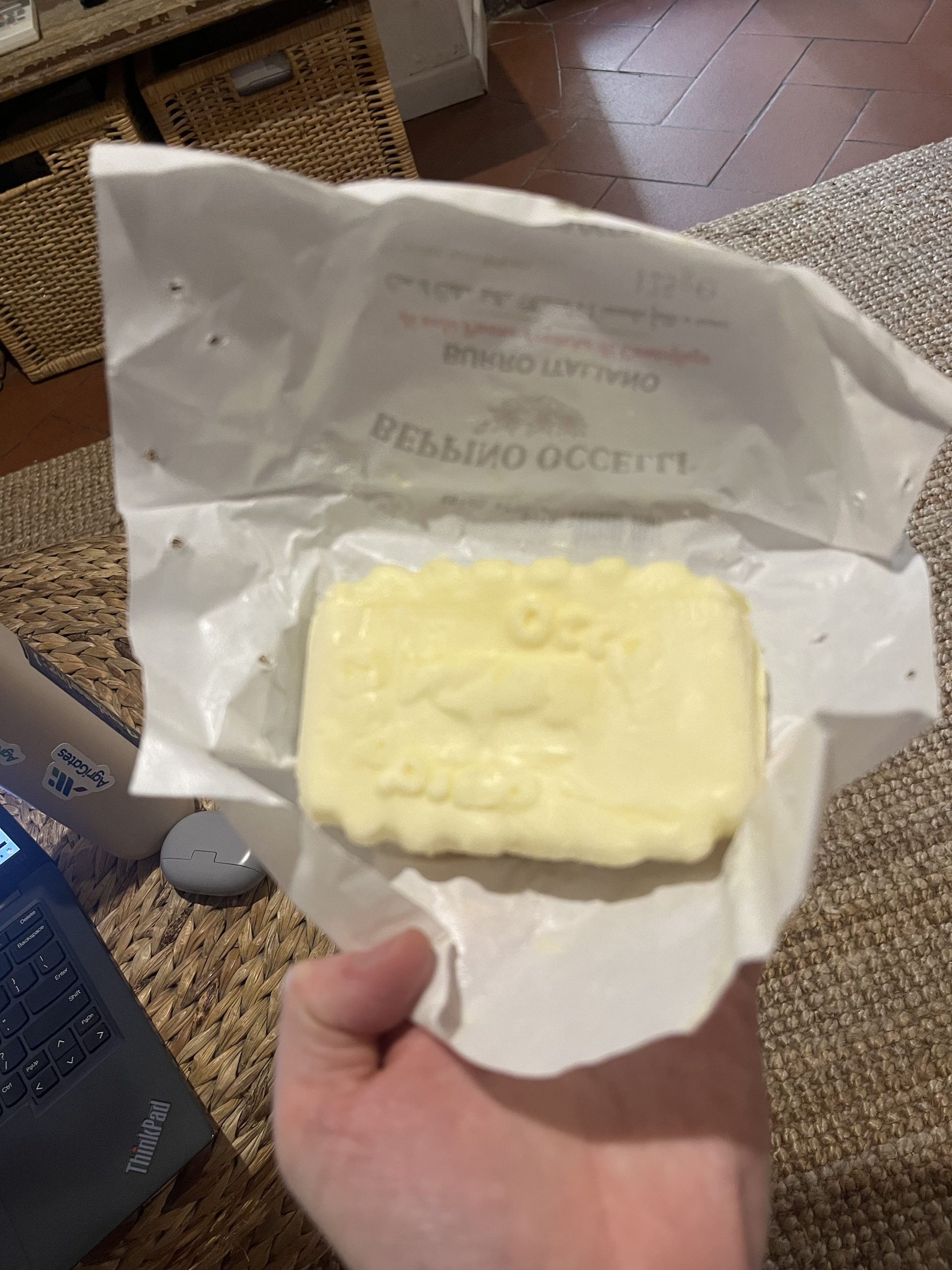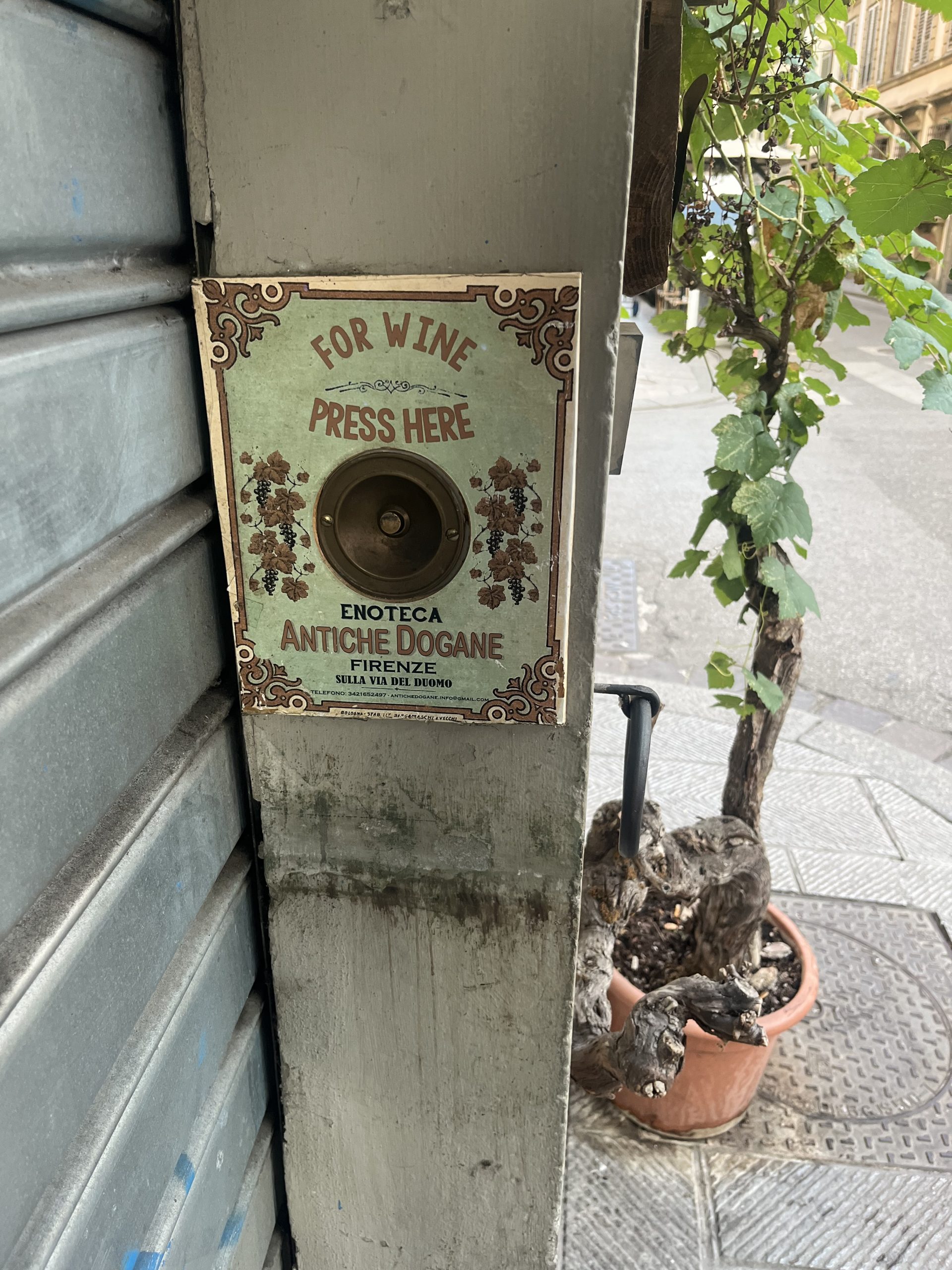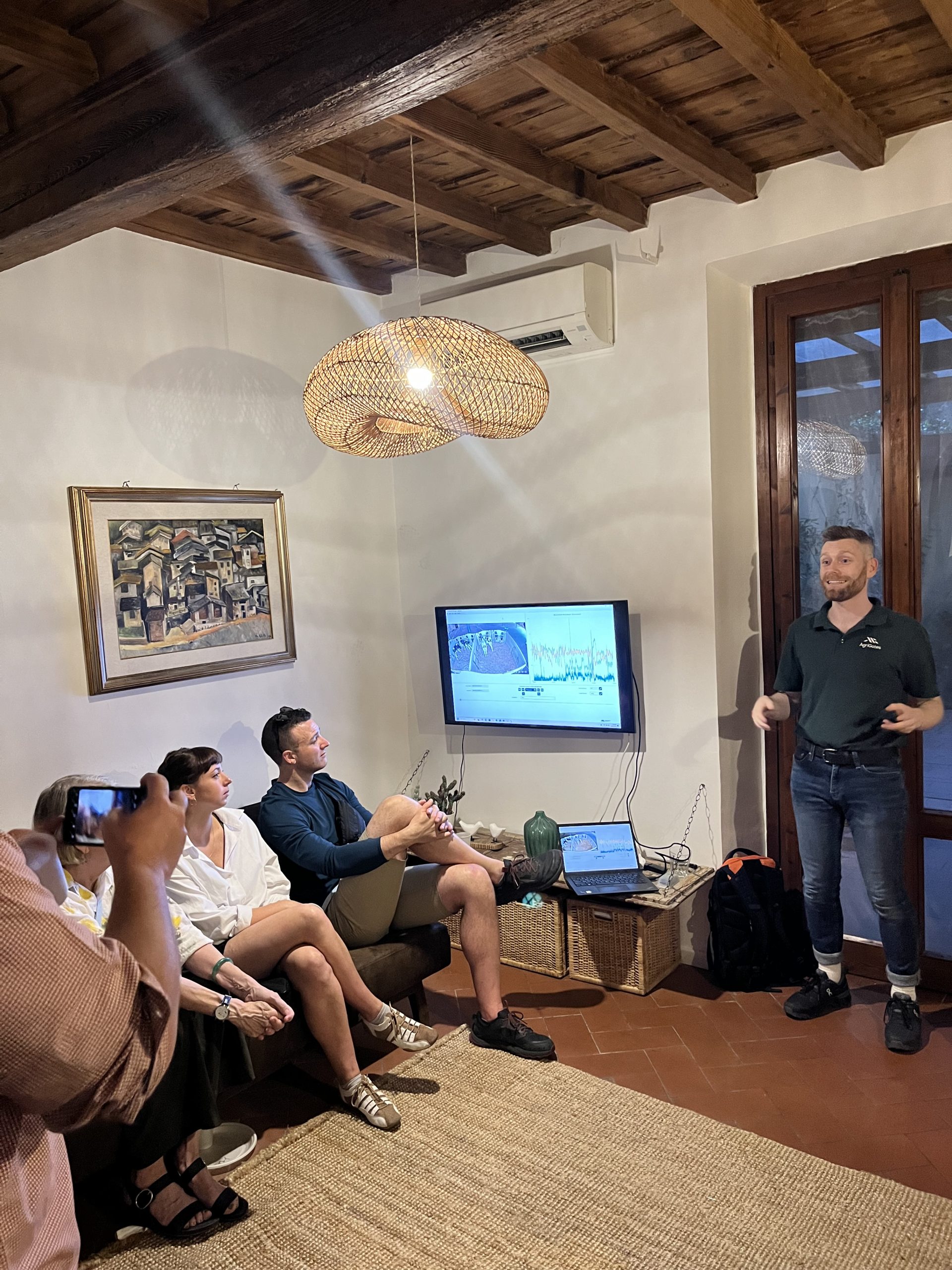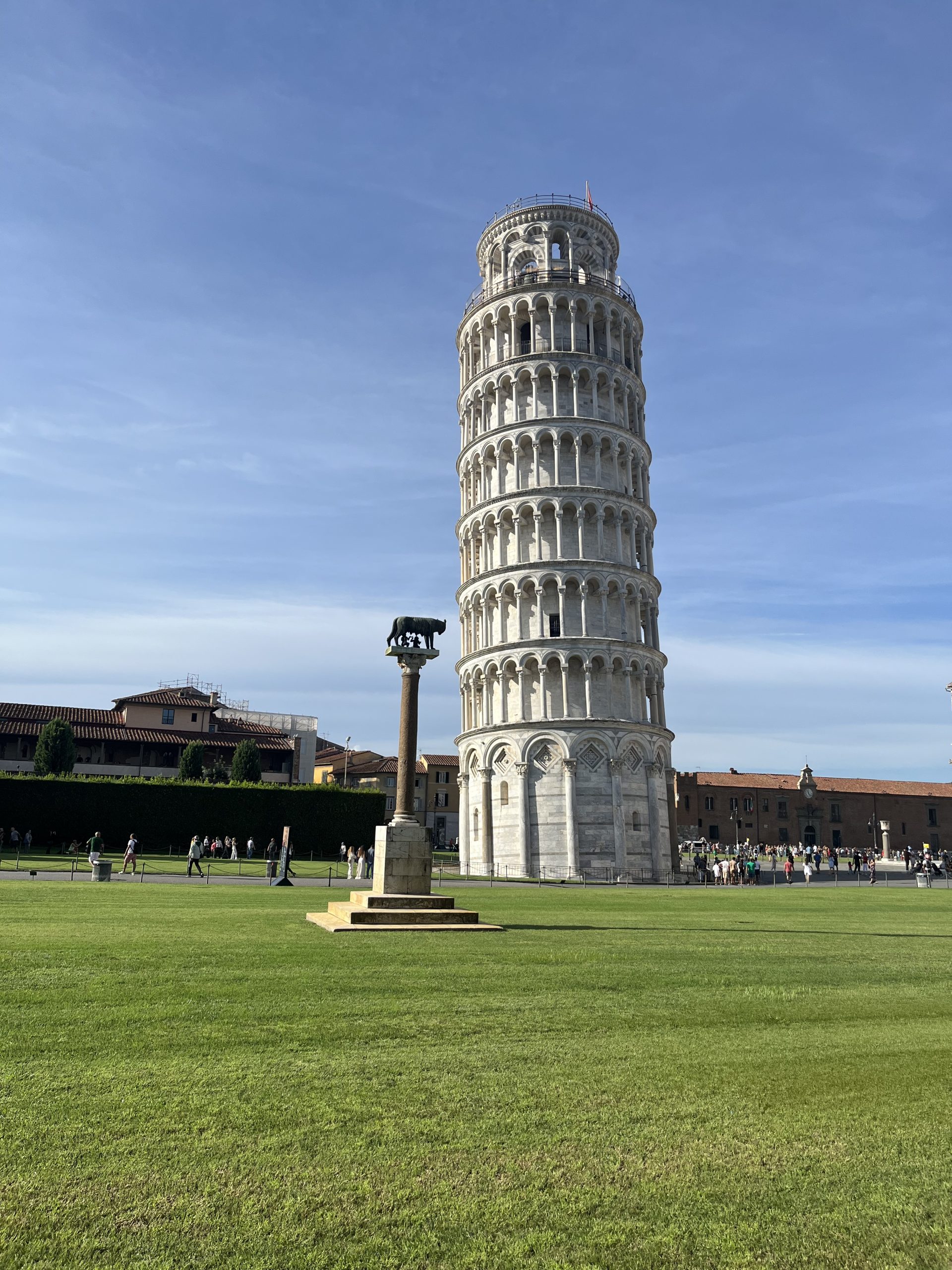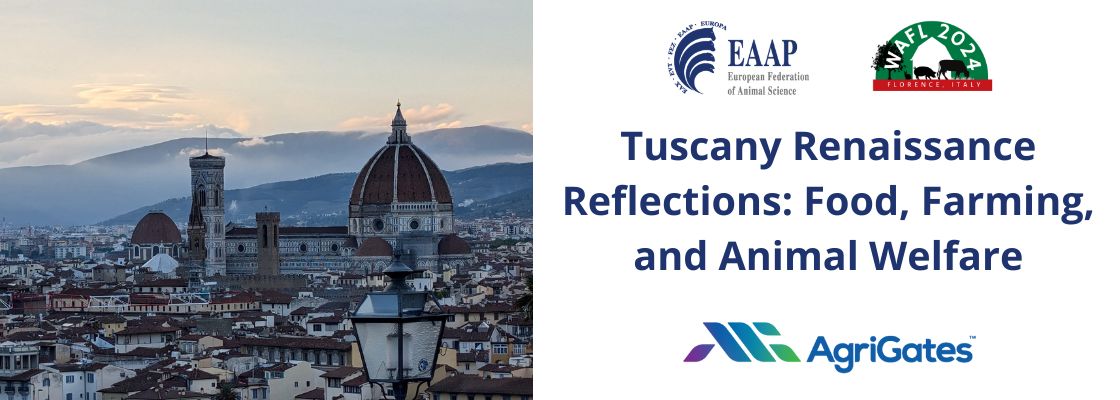The EAAP (European Federation of Animal Science) continues to be a pivotal event on my annual calendar, and this year’s conference, while in Florence, there was also the opportunity to attend the Welfare Assessment of Animals at Farm Level (WAFL) conference. Attending both conferences back-to-back—while giving a presentation, presenting a poster, co-chairing three sessions, proposing a working group on sensor and standards development, engaging through speed dating with about 50 young animal scientists, and hosting a launch party for AgNotateTM—was not for the faint of heart. It was a marathon of preparation, engagement, networking, and discussion, yet it was both fun and exciting to see new research and connect with colleagues worldwide. I wouldn’t change anything about the trip; Tuscany offers a backdrop where work, food, wine, and passion are all seemingly infused. During my travels I also managed to visit Grand Chianti, Siena, Pisa, and San Gimignano, making it a jam-packed experience.
Florence, the base of my trip, is the birthplace of science, measurement, innovation, and the Renaissance. It was the supercity of its day, and it was inspiring to experience its rich history, tied to figures like Michelangelo, Galileo Galilei, and Leonardo da Vinci, who still influence our lives today with their innovations and thinking. Visiting the Galileo Museum was a powerful reminder of how much has been achieved in just 400 years of scientific discovery and methodology. Seeing early tools, from telescopes to thermometers, made me wonder: if thermometers, in their early blown glass, were invented centuries ago, where temperature measurement is an essential and standardized tool in today’s daily life, can we achieve the same innovation of tools in food-animal science to improve welfare and measure behavior? Now inspired, I believe it is possible and achievable within our area of science to develop such standard tools we need.
Animal Welfare and Science
The welfare of animals is linked to human welfare. Food animal agriculture has played a vital role in shaping humanity, but as we become more aware of animal suffering and negative welfare, we must transition toward positive welfare models and measurement capability beyond production units. How can we create tools and standards to support this research? That’s the now exciting challenge for science.
Farm level, animal behavior, and welfare data require a farm-specific data infrastructure, enabling farmer ownership and rights over their data, security, and governance. These are necessary components to target improved welfare and measure the five domain models. This model for farm-specific data infrastructure limits the idea of the “police state” for farms and relieves anxiety while limiting the companies who provided the current generation data systems’ ability to mine farmer data for their own value without approval or contractual agreement. Data is crucial in identifying new values, which need to be returned to the farm, where this can be used to challenge the status quo on such welfare challenges as the “cull” animal where they have no economic value. Can data help us generate value, even under challenging welfare scenarios, by providing enough capital to invest in better welfare or a positive life? I believe this is now possible and achievable within the science.
Different countries approach welfare with varying attitudes and resources. A review of welfare standards and definitions, research projects, and technology adoption across regions is necessary. Precision Livestock Farming (PLF) needs a stronger ethical stance, especially regarding how technologies are deployed in research and on farms. Tools that contradict the Five Domains model—such as shock collars or heavy, cumbersome devices—should be reconsidered.
There seem to be two emerging camps within the welfare community. One focuses on production-oriented metrics, while the other advocates for a more radical and progressive shift toward improving welfare by understanding animal behaviors through the Five Domains model. This reinforces the need to engage in meaningful dialogue, with mutual respect, even when we disagree, to find common values that drive innovation and progress in science. Moving beyond production units, we must ask if the current metrics in animal science are the right ones for behavioral and welfare research and where we need to go in understanding positive welfare and the mental domain. If science is about exploring the unknown, we must push boundaries in animal science and develop new metrics and measurements for the five-domain model for food-animal agriculture to evolve its practices. Perhaps we are on the cusp of innovation for our food-animal agriculture renaissance, and in that, there is natural resistance to change.
The Power of Collaboration
The WAFL conference provided a unique space for professionals from many countries to unite in addressing animal welfare issues. There was a strong sense of community and shared purpose. However, we need to become more comfortable discussing uncomfortable topics in animal science, breaking out of our domain silos, and engaging in meaningful dialogue and a common language in improved and positive welfare. Not everyone will agree on every detail, but common values can drive innovation and scientific progress.
From the sixty or so talks I attended between both conferences, one message was clear: there is a pressing need for data standards and standard operating procedures (SOPs) for PLF tools, particularly for animal behavior and welfare. The launch of SENSTARA (Sensor and Standard Development for Research Activities) within the EAAP PLF study commission is a step toward addressing this. This working group aims to create a dedicated session and discussion at the 2025 EAAP conference in Innsbruck, Austria, to push forward on behavior and welfare standards within PLF technology across species. I believe this directly aligns with the EAAP’s conference theme this year: “Global Quality: Environment, Animals, and Food.” We hope this approach will lower costs, make PLF species-agnostic and ubiquitous, and improve the quality of animal welfare research, with impact at the farm level.
The Future of PLF and AgriTech
The challenge of using technology for behavior and welfare monitoring in PLF is immense—it’s our own “moonshot” project. However, there is a path forward if we consider all farming systems and approaches, something current AgriTech models often overlook. Key changes include:
- Shifting the business model within AgriTech to focus on welfare and behavior standards across species. (Will subscription and SaaS models fit this need?)
- Moving toward distributed computing, bringing processing power to the farm.
- Developing open-source libraries for PLF.
- Enhancing collaboration between academia and industry, but not just with multinationals, start-ups and spin-outs are required and vital in new tool development (hardware and software).
- Creating data and model standards to increase data value, reduce system costs, and encourage wider adoption.
- Designing user-friendly, ubiquitous systems that require minimal manual operation.
- Reducing system costs is critical to improving animal welfare and increasing adoption rates across all farm types and scales.
Agro-Tourismo and the Renaissance of Food Animal Agriculture
During my visit to La Coinle vineyard in the Grand Chianti region, I saw how farm diversification and agritourism have become critical to farm income. From holiday rentals and wine production to truffle hunting and olive oil making, farmers are diversifying their businesses in remarkable ways, even at 30 hectares. The connection between food, land, and culture is essential to the Tuscan way of life, something that becomes clear when you witness the passion for food and agriculture in this region.
In Panzano in Chianti, we visited Officina Della Bistecca, where attendees shared in the experience of eating an entire cow, raised, killed, and butchered by Dario Cecchini, an 8th-generation butcher and veterinarian. His respect for the animal was evident in his use of every part, from nose to tail. The atmosphere was lively, the food was delicious, and the setting embodied the true spirit of Tuscany—but come prepared to eat plenty of meat! This made me reflect: do we lose part of our cultural identity without food animal agriculture? and how has food animal agriculture contributed to innovation in this region?
The Carbon Credit System and Rural Communities
At EAAP, my Italian colleague Michael Odintsov Vaintrub, DVM and COO at Regrowth, presented their carbon credit system, which holds significant promise for small-scale farmers, who make up 90% of the global agricultural population. These systems could return significant monetary value to rural communities, but quality data capture is required to assess, certify, and offset welfare and sustainability improvements. I am excited to follow this company’s progress because they are on to something.
Large corporations are increasingly interested in farm data as a tool for developing new capabilities to sell back to farms. While this system can work, it’s vital that farmers receive fair, tangible compensation for their data. Governments and NGOs also seek this data, providing additional potential revenue streams for farmers.
However, the current AgriTech model needs to change, where each provider has its own “straw in the punch bowl” of farmers’ data, with Cloud and SAAS-based models. Instead, farmers should control access to their data, ensuring they are fairly compensated and determining who and what entity has access. This centralized, farmer-controlled data model can improve animal welfare and enhance data-driven value for farmers. This is also possible within the science; it’s going to require a different model with AgriTech tools for farmers and even researchers.
Looking Ahead
The Renaissance was a pivotal period of innovation, driven by the need for scientific discovery. As we move into the next era of food animal AgriTech, we need a similar reinvigoration of purpose. By improving food animal welfare and supporting rural communities through data and AgriTech, we can help ensure a vibrant future for both.
This trip and conferencing has renewed my dedication to improving animal welfare and supporting farmers by generating new value in food animal agriculture, that food animal and human welfare are interlinked and balanced in a delicate global ecosystem. There’s a lot of work ahead, but with collaboration, innovation, and a shared commitment to progress, I remain optimistic. If you’re interested in getting involved, reach out—there’s plenty to build. See you in Innsbruck next year!


